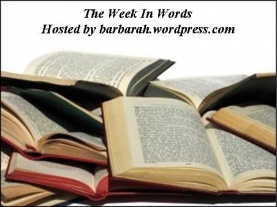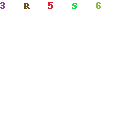I’ve read three books in the “humor” category (Dewey Decimal 817) in the past couple of weeks, and wanted to share my general impressions, but in short form (longer than Nightstand blurbs, shorter than full reviews). So here goes:
Stick to Drawing Comics, Monkey Brain! by Scott Adams
Dilbert is often funny, occasionally hilarious. So I figured I’d be doing just fine picking up a humor book by Dilbert cartoonist Scott Adams.
The introduction almost convinced me to put down the book–since Adams basically spent the whole thing saying how great he is. Despite his attempts at humility “To put all of this [bragging] into context, I remind you again that I fail miserably about ten times for every one success”, he comes off as an absolute prig.
But I trucked on through, hoping that the body would be better than the introduction.
It was–at least, it wasn’t Adams being a blowhard, so it was better than that. And it wasn’t as dirty as I expected after the introductions “Some readers will wonder why I couldn’t write a book without all the vulgarity that you will find here…”
No, the problem wasn’t the vulgarity or the arrogance. The problem was that it just wasn’t that funny. Sure, a couple of the sketches were funny enough to evoke a chuckle or a read-aloud–but that was maybe five out of the roughly 175 in the book.
I really would rather the author had NOT ignored the helpful advice: “Stick to Drawing Comics.”
It Looked Different on the Model by Laurie Notaro
I put this one on my TBR list after reading Sarah’s review. Then I rather forgot about it until my last library trip, where I saw it on one of the features rack.
As promised, Notaro’s “epic tales of impending shame and infamy” are everywoman’s stories, except on crack. Not that she actually does crack. Really, she’s pretty much a good girl, even if her Mom disagrees (although her mom had to concede that if Laurie isn’t normal, the gals at the “bad daughter retreat” are REALLY not normal.) It’s just that everything you or I imagine or experience, she experiences just a little bit more.
I’ve tried on clothes that I had a hard time getting off. Laurie’s ended up with a bloodied blouse after trying for hours to remove it in the dressing room. You’ve gotten forwarded horror story scams from your mother? Laurie’s gotten dozens–with follow-up phone calls. You’ve gotten stuck after telling your children (or someone else’s) horror stories about what might happen if they did thus or so? Laurie ends up buying her nephew an entirely new wardrobe after she convinces him that he just poisoned himself.
This was quite funny, although with caveats. As with much humor writing (and especially the memoirish sort, it seems), the politics lean left and the morals lax. Not that Laurie’s celebrating adultery or whatnot, but she does find having her nephew touch Babe the Great Blue Ox’s blue, er… netherparts… hilarious. So if that makes you uncomfortable, so might this.
The Dangerous Book for Dogs by Rex and Sparky (Joe Garden)
A parody of The Dangerous Book for Boys, this volume contains everything a young dog needs to know to experience “the greatest joys of canine existence”.
It has descriptions (and pictures) of all the best things to chase, historical sketches of famous dogs, instructions for removing humiliating costumes, and Q&A’s answering such vital questions as “Why can’t I drink from the water bowl in the bathroom?”
This is funny whether or not you’ve read The Dangerous Book for Boys, but even more funny if you’re a fan of that book (or it’s female counterparts The Daring Book for Girls and The Double Daring Book for Girls).
Overall, this is pretty clean, although it is written from a dog’s point of view, where cleaning ones genitals in public or humping a stranger’s leg are common activities, and where “bitch” is an appropriate term used to refer to females. Generally, though, these aren’t regarded as humorous to the dog, but are stated in a matter-of-fact way: “A common myth held among humans is that we enjoy sticking our snouts into their crotches. False. Who on earth would think this is a pleasant experience? No, the truth is that we sniff crotches because it makes owners wildly uncomfortable…The real payoff comes when the people your owner is speaking with begin to scroll through a laundry list of questions in their minds… [like] Is he keeping a sandwich in his crotch?”
I certainly enjoyed this book, and think that most readers who enjoy humor writing (whether they like dogs or not) would enjoy it as well.
 I’m still reading my way through the children’s picture book section of my no-longer-local library. For more comments on children’s books, see the rest of my Reading My Library posts or check out Carrie’s blog Reading My Library, which chronicles her and her children’s trip through the children’s section of their local library.
I’m still reading my way through the children’s picture book section of my no-longer-local library. For more comments on children’s books, see the rest of my Reading My Library posts or check out Carrie’s blog Reading My Library, which chronicles her and her children’s trip through the children’s section of their local library.





